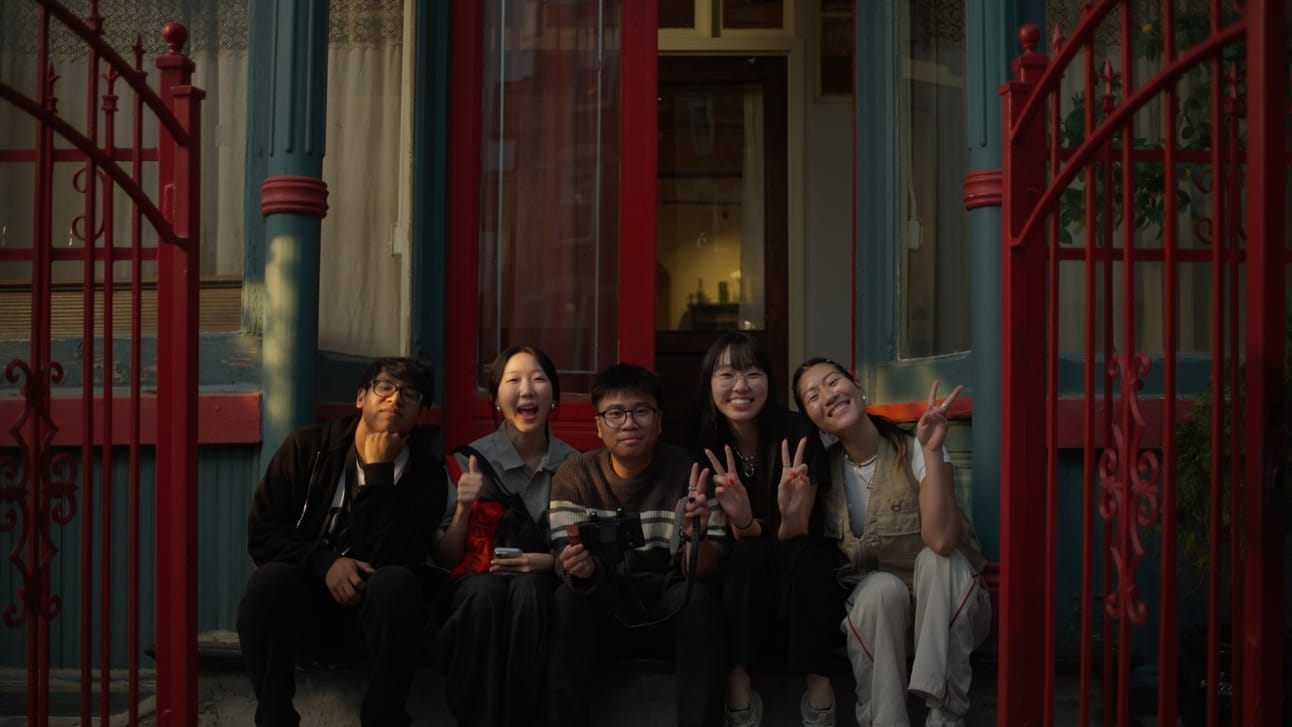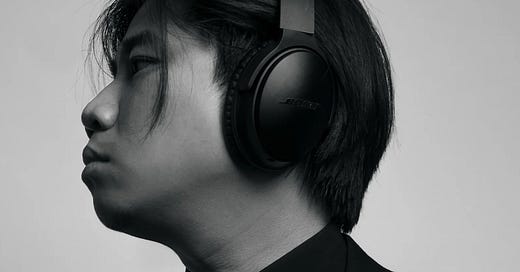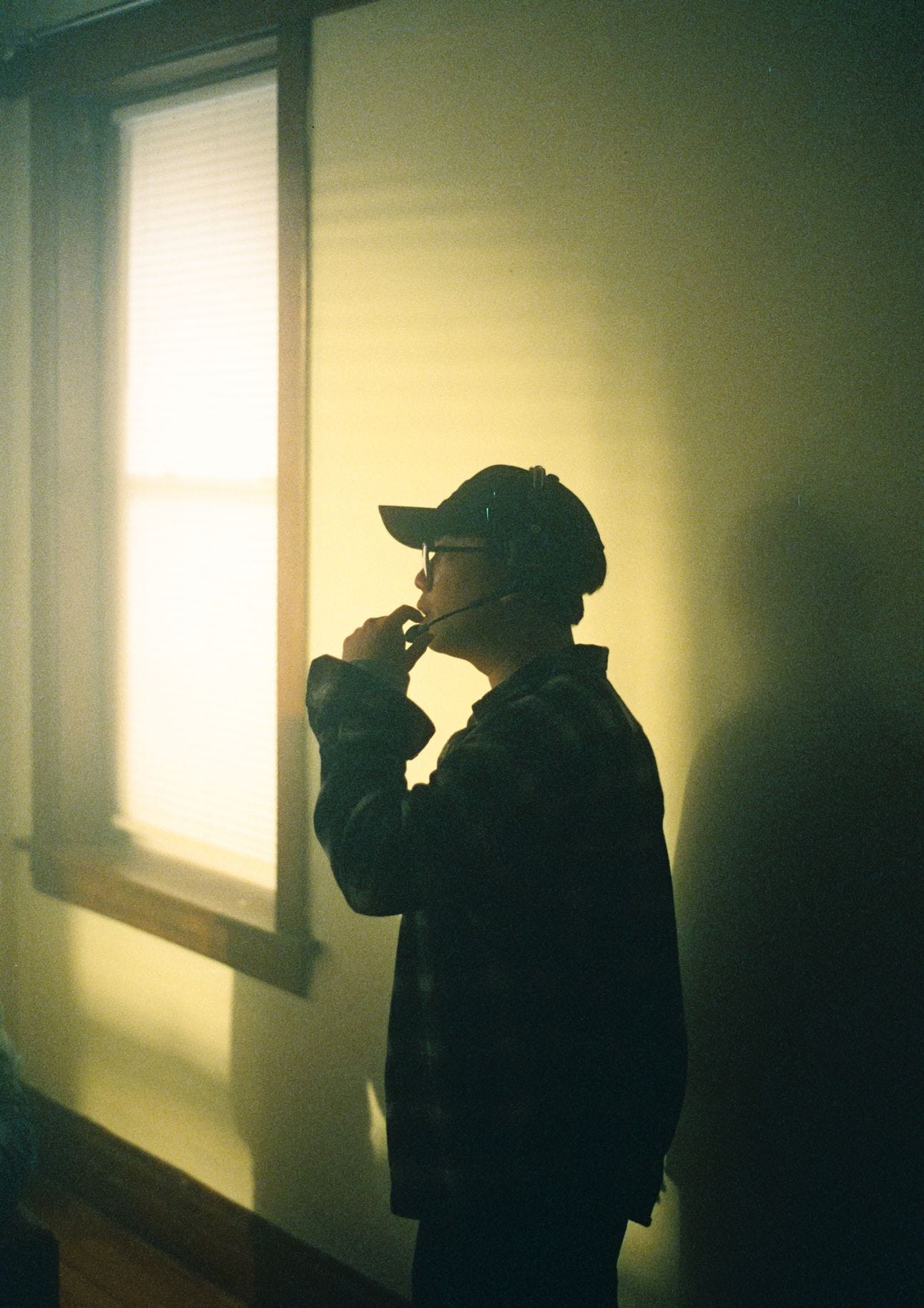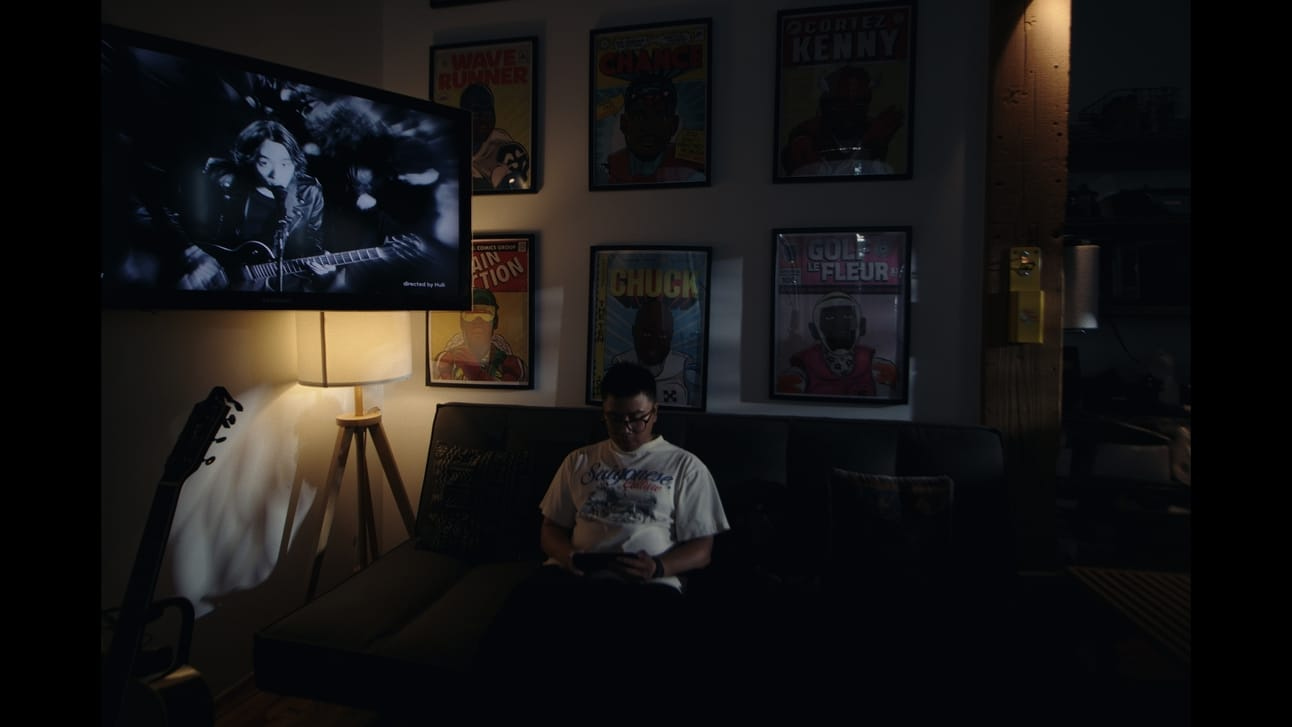Documenting Life with Cinematographer Phat T. Nguyen.
On seeing life in its totality, balancing artistic cultures in Vietnam and the United States, and rooting for those who you hold closest to you.
Welcome back to our interview series—or rather, conversations that have shaped my world. This week, I’m sitting down with Phat T. Nguyen, a cinematographer and a seeker of life in its totality. Phat deeply inspires me, and in this conversation, he reminds me to see life not as a pursuit of opportunities, but as an abundance in itself. Every moment, every detail, every fiber of experience. It’s this perspective that crafts the cinematic language he carries into all of his work.
The Produced: How did your journey becoming a cinematographer come about?
Phat T. Nguyen: My dad was a photographer, and I grew up watching him carrying around this camcorder whenever we were on vacation. He’d film everything and later made videos. I had no idea how he edited or cut the footage. He also had no intention of making something out of it. These videos were simply to share with everyone who went on the trip: my grandparents, aunts, uncles and cousins, families–anyone who would relish seeing themselves on videos. Laughs.
At the time, our family owned a small photo studio in Vietnam. I remember my dad taking occasional classes to learn Photoshop and develop photos, and I’d always tag along, absorbing everything I could. After that, whenever I felt down, I’d open my computer and start editing photos to blend beautiful images with text, utilizing the knowledge I got from following my dad around. But after moving to the U.S. at 15, I put it all aside. My focus shifted to finishing high school and going to college, where I spent two years studying computer science. Plot twist (not really): I didn’t enjoy it at all, so I switched to a community college to study graphic design. That’s when I reconnected with my creative side, and I’ve never looked back.
Was it second nature picking up the camera again after you’ve made the decision to switch?
Using the camera felt instinctive for me—it just clicked. Everything came naturally, and I quickly fell in love with images and visual textures all over again. I restarted with photography, then moved to video. Once I discover something I love, I dive deep and push myself to get better. I immersed myself in learning lighting, camera setups, lenses, and all the technical details to seriously explore filmmaking. Looking back, it feels like an overnight shift, but it was actually a gradual transition from photography to filmmaking.
Both photography and filmmaking share the same essence of capturing moments. What do you feel sets them apart?
For me, a single photo can tell a story, but with video and filmmaking, you can convey a richer, deeper narrative and uncover elements you might otherwise miss. So telling stories through film felt like the most natural path for me as a cinematographer.
Would you have gone through the same process if you get to start from scratch again: from switching out of computer science, getting back to photography to slowly finding cinematography?
No, I would not. I think such a transition was absolutely needed. The title "Director of Photography" already has the word "photography" in it, and having a solid foundation in photography has been incredibly helpful in my transition to being a DP. Photography gave me the basics—understanding composition, light, and framing—which made the move into cinematography feel more natural. So I’d still follow the same path.
That said, there are moments when I wish I had started earlier, that I had pursued this field sooner. But when I reflect on it, I realize that starting later gave me foundational skills I wouldn’t trade for anything. My background in graphic design and even my early dabbling in photography all contributed to how I approach my work now.
How has that backgrounded influence your approach in cinematography now?
Even though I no longer use graphic design in a direct way, it taught me a lot about how to perceive and work with colour, composition, and how to guide the viewer's focus within a frame. Those skills now blend seamlessly with my work in cinematography. And while I hesitate to say it’s all "natural talent," I do feel like I’ve been immersed in visual imagery from a young age, which gave me an intuitive sense of how to create compelling visuals.
Reflecting on your career so far, which project stands out as the one where you experienced the most creative growth?
It will definitely my work for HURRYKNG’s music video, “Ma Nơ Canh.” This project marked not only significant growth in my artistry but also in my adaptability, as I navigated the differences in working cultures between the United States and Vietnam.
How so?
Artistically, I would say this project pushed me the furthest I’ve ever gone in exploring colours and creating striking visual imagery. The song is all about the double standards of being put on a pedestal and constantly being perceived as someone standing under a spotlight. So mannequins are the closest things to rendering that feeling. They show the objectification that young artists like HURRYKNG face daily, not only from haters but also from colleagues within the industry.
I love this imagery, and it’s such a prevalent concept that I believe many artists can relate to, especially with the complex para-social relationships they have with the public. Also the colours, man! Can you elaborate more on the adaptability of culture that you mentioned?
Certainly, I can only speak from my experience, but one of the most significant lessons I’ve learned from working on many projects in Vietnam is the age dynamics that influence workplace’s hierarchy. In Vietnam and I believe in many cultures, age is a significant factor. So as a DP, I had to lead and give instructions while being mindful of the respect owed to their seniority. It was a challenge to balance being decisive and steadfast in my decisions while remaining respectful.
At one point, I had a disagreement with one of the older members of the crew, as they wanted to approach things based on their experience, while I knew I had been brought on for my specific style and vision for the project.
And how did you navigate that?
The solution was finding a middle ground: I communicated the outcome I wanted, allowed him to work his way, and then stepped in to tweak and adjust as needed. This experience taught me the importance of trusting my crew's expertise while still being vocal and assertive about my vision as a DP. Most importantly, it taught me to be perceptive of changes and the adaptation of different cultures with their unique etiquettes and workplace dynamics. Being aware of these distinctions will only nourish my growth and create space for my artistry to blossom.
Your work is deeply rooted in capturing moments—through colour, composition, and the rhythm of images. At what point did this instinct to document your own life become Cinediary, a series of digital journal videos of your life?
To be honest, I’ve always wanted to become a Youtuber. Laughs.
I grew up watching low-budget short narratives and animations on YouTube, and I’ve always been in awe of how creators could collage all these moving images to tell a story. I truly thought I was going to be a YouTuber. But as I transitioned into film, I started to see filming my everyday life as a practice for my work as a cinematographer because it forces me to notice more.
What was your goal behind it?
When I first started the Cinediary series, my goal was simple: to capture moments I wanted to remember through a more cinematic lens, reflecting how I see life and navigate through it. The first thing I filmed was the house I’m currently staying in here in Vietnam, as I was preparing to return to the U.S. and wanted to preserve memories of this space.
It then evolved into filming while traveling with friends, family, and people I love. Now, it’s become a beautiful mix of everyday life footage, travel, and experiencing the present.
Has your relationship with the series changed as you’ve grown into a more nuanced and seasoned creative, and as you’ve matured as an adult?
I’m still able to preserve much of the feeling and emotions these videos have helped me process. It’s nostalgic, like a warm hug from all the paths I’ve crossed. When I was filming, I had no intention of creating something from these videos. I filmed simply because I had so, so much fun. And even now, looking back, I’m still having a blast. I think it’s important for all of us, especially as creatives, to find a way to collect and archive memories and moments—you never know when you’ll need them.
Where are you right now, in terms of mental space, career, and as a human being?
I think when I was in the U.S., I always had this mindset that “I had to do better, to push myself further.” It was all about striving, achieving and being in an individualistic mindset. But ever since I came back to Vietnam two months ago, my priorities have completely shifted.
Here, it feels like all I want to do is use my skill set to serve the people around me as best as I can.
That’s really been my focus lately—figuring out how I can contribute meaningfully to those around me while also making a living from it. Certainly, striking a balance between serving people and also preserving the space for myself to grow and strive is quite difficult. That’s the limbo I’m in right now.
Talking about shifting mindsets, what do you look for in a project now?
I’m fortunate to now have the agency to choose the projects I work on—a place I’ve reached after quite a journey. For me, the person inviting me onto a project has to meet a few key criteria, though it’s not an exhaustive list.
What are they?
First, I genuinely need to like them. Second, there should be good energy and a natural connection between us. And, of course, we need to be aligned in perspective, aesthetics, and personal values. In my field, collaborations often span months and can mean spending entire days or multiple days together, so whether we click is so important. That’s why my first step is always to get to know them and see if we’re a good match. If we vibe well and I resonate with their concept or idea, I’ll wholeheartedly support it. Recently, I’ve noticed more directors reaching out because they genuinely resonate with something in the visuals I create.

For instance, with the project I worked on with Gracie Koh, How Immigrant Parents Say I Love You, Gracie specifically sought elements that evoke deep emotions—whether through colours or visuals of everyday, mundane moments that leave a strong impression on the audience. In stories about immigrant parents and families, the most powerful emotions often stem from the things we tend to overlook: the constant overstimulation of sounds and voices in the house, or the kitchen that never rests.
Similar to this one, I just love projects that prioritize the emotional aspect and the artistry behind it. So, I’m grateful that more and more people are drawn to my work because it carries an emotional quality.
What materials, people, or art do you consider important anchors in your creative process?
I turn to music a lot for inspiration—whether it’s classics, nostalgic tunes, or new tracks from young, emerging artists. At the beginning, when I was doing video work, I had to teach myself how to edit. So, when I started editing music, I’d pick a track and search for music on various websites, like music libraries or live sound collections. But rather than just focusing on the technical aspects, I’d listen to the music and let the melodies guide the visions forming in my mind. Even when I wasn’t working on a specific project, listening to music would spark new ideas and feelings. The music would evoke a particular mood or visual in my mind, and I’d think about how to translate that feeling into visuals that would enhance the music. That’s where I draw most of my inspiration—from music.
What’s on your current rotation?
Recently, I’ve been super into thuy’s music lately!
We love another talented, Viet fellow creative mentioned in the house! If you could only watch one film for the rest of your life, what would it be?
That’s a hard question. Before I started pursuing film as a career, my attitude towards watching movies was merely for entertainment, as I hadn’t explored classic films yet. During that time, I felt like my experience with film was somewhat flat—nothing really moved me emotionally or gave me that artistic feeling that everyone had been talking about. Then, while I was in Vietnam, someone showed me a film by Wong Kar-wai, and it completely changed my perspective. Chungking Express (1994) changed my perspective on cinema forever.
Tell me more about it.
The film was unlike anything I had ever seen before—from the visuals, the camera movement, the actors, the colour palette, to the outfits and set design. Before that, I had mostly been watching Hollywood films. But after watching Chungking Express, I went down a rabbit hole on Hong Kong cinema, and it was like a revelation. I thought, Wow, this is art. It made me realize why people love classic films so much—they’re incredibly artistic and different from what I had known, especially in how they approach filmmaking. It really reshaped my understanding of cinema and art.
Having worked and now constantly growing in both places, what do you think our artistic and cinematic scene in Vietnam right now?
I truly believe Vietnamese cinema is on the rise. Though I’m not entirely well-versed in the full cinematic scene in Vietnam, in recent years, we’ve seen so many breakthrough films from home making a mark on the international stage, such as Inside the Yellow Cocoon Shell (2023), which was a beautiful and poignant film.
However, I do think the industry still needs more filmmakers who are willing to take risks, as much of our work still feels a bit safe. The industry tends to follow familiar formulas, and we don’t see as many experimental films or those pushing boundaries, despite the abundance of young Vietnamese talent and creative artists.
Why do you think that is?
I think there’s a reason for that, though—Vietnam has a strong sense of tradition and values, and sometimes it’s hard to break away from the norm. So, I understand why it’s challenging to experiment or introduce new messages, as they may not always be well-received. But I do believe the industry is getting better and thriving—it just needs time, more risk-takers, and fresh ideas.
In a world that often resists change, what makes you hopeful that it will come? And what makes you hopeful?
It’s definitely the people around me who make me hopeful and make me better. I’m lucky because the people I’m surrounded by are extremely talented, and I’m constantly learning from them. Most of my friends are in the same field, and seeing them grow, improve, and push themselves every day is really inspiring. They keep getting better, and being part of that journey—supporting them in any way I can—makes me feel hopeful.
I don’t find working on projects or collaborating with well-known figures to be as important as working with people I care about. The real joy comes from working with friends and colleagues I admire, where we all improve together. I want everyone around me to thrive in their fields. And I’m witnessing that happening. It’s motivating to see the people close to me becoming experts in their crafts, and it makes me want to become better myself. I’m truly excited for the future.
I want to see the people I care about win.
PHAT T. NGUYEN: Instagram: @phat_t.n | Portfolio: phattnguyen.com











